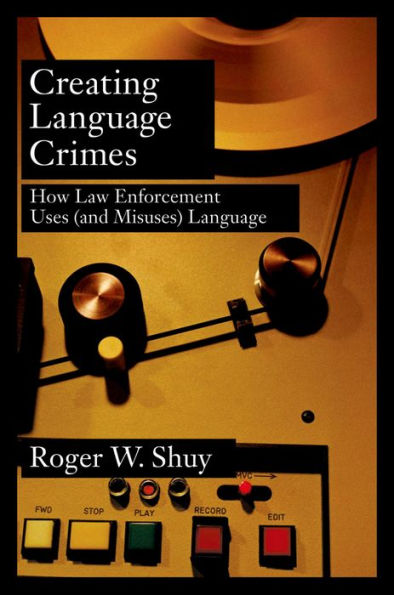This book by Roger W. Shuy, the senior figure in forensic linguistics, is the first to explain in an accessible way the vital role that linguistic evidence and its proper analysis play in criminal investigations. Shuy provides compelling case studies of how language functions in investigations involving, among others, wired undercover operatives, and the interrogation of suspects. He makes the point that language evidence can be as important as physical evidence, but yet does not enjoy the same degree of scrutiny by investigators, attorneys, and the courts. Beyond this, however, his more controversial thesis is that police frequently misuse or manipulate language, using various powerful controversial strategies, in order to intentionally create an impression of the targets' guilt or even to get them to confess. This book makes its case by analyzing a dozen criminal cases involving a variety of crimes, such as fraud, bribery, stolen property, murder, and others. About half involve co-operating witnesses who do the tape recording, and the other half undercover police officers. These cases demonstrate how undercover operatives use different conversational strategies, such as overlapping conversation, ambiguity, interruption, refusing to take "no" for an answer, and others to create a negative impression of the targets on later listeners. Creating Language Crimes provides a fascinating window into a little-known and discussed facet of law enforcement. It will appeal to anyone concerned with language (particularly sociolinguists and discourse analysts), as well as to those involved in law enforcement and criminal cases.
1122988106
Creating Language Crimes: How Law Enforcement Uses (and Misuses) Language
This book by Roger W. Shuy, the senior figure in forensic linguistics, is the first to explain in an accessible way the vital role that linguistic evidence and its proper analysis play in criminal investigations. Shuy provides compelling case studies of how language functions in investigations involving, among others, wired undercover operatives, and the interrogation of suspects. He makes the point that language evidence can be as important as physical evidence, but yet does not enjoy the same degree of scrutiny by investigators, attorneys, and the courts. Beyond this, however, his more controversial thesis is that police frequently misuse or manipulate language, using various powerful controversial strategies, in order to intentionally create an impression of the targets' guilt or even to get them to confess. This book makes its case by analyzing a dozen criminal cases involving a variety of crimes, such as fraud, bribery, stolen property, murder, and others. About half involve co-operating witnesses who do the tape recording, and the other half undercover police officers. These cases demonstrate how undercover operatives use different conversational strategies, such as overlapping conversation, ambiguity, interruption, refusing to take "no" for an answer, and others to create a negative impression of the targets on later listeners. Creating Language Crimes provides a fascinating window into a little-known and discussed facet of law enforcement. It will appeal to anyone concerned with language (particularly sociolinguists and discourse analysts), as well as to those involved in law enforcement and criminal cases.
56.49
In Stock
5
1

Creating Language Crimes: How Law Enforcement Uses (and Misuses) Language

Creating Language Crimes: How Law Enforcement Uses (and Misuses) Language
eBook
$56.49
$74.99
Save 25%
Current price is $56.49, Original price is $74.99. You Save 25%.
Related collections and offers
56.49
In Stock

Product Details
| ISBN-13: | 9780190292805 |
|---|---|
| Publisher: | Oxford University Press |
| Publication date: | 09/15/2005 |
| Sold by: | Barnes & Noble |
| Format: | eBook |
| File size: | 716 KB |
About the Author
From the B&N Reads Blog
